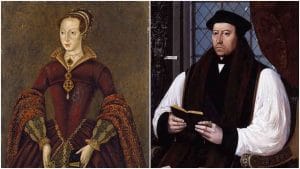 On this day in history, 13th November 1553, Lady Jane Grey (or Queen Jane as I think of her) was tried for treason in a public trial at Guildhall, London, along with her husband Guildford Dudley, his brothers Ambrose and Henry, and Archbishop Thomas Cranmer.
On this day in history, 13th November 1553, Lady Jane Grey (or Queen Jane as I think of her) was tried for treason in a public trial at Guildhall, London, along with her husband Guildford Dudley, his brothers Ambrose and Henry, and Archbishop Thomas Cranmer.
They were all found guilty and condemned to death, the men being sentenced to being hanged, drawn and quartered, and Jane to be burned alive, or beheaded.
Click here to read more about the trial.